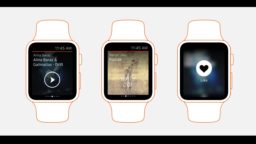In this MBW op/ed, Nick Lawrence, founder of UK-based business management and accountancy firm BigStar, explains why fulfilling the potential of a direct-to-fan model has grown in importance in a ‘non-live’ music industry and why doing so is all about understanding both artist and fan.
It’s easy to fall into the trap of thinking about business management and accountancy in music and entertainment as mainly being about protecting and managing income.
Shrewd advice, sound investment, savings accounts and the like.
And while that’s partially true, the good ones should be doing a lot more.
They work with and advise their artists on income generation.
And that’s not just chasing them out on tour either, but exploring other, more creative or inventive approaches; ideas for supplementary revenue that tow the fine line between helping generate as much value as possible for an artist, without ever taking their fans for granted.
Doing it well takes skill, sensitivity and a deep understanding of the artist and fanbase you are working with.
Diversifying revenue streams
Generally speaking the first thing that a fanbase wants is the live experience. That was true in the ‘60s, is true now, and will likely be true in 2050. But even so, it’s crucial that artists (and their business managers) have other means of driving revenue.
Why? Well aside from the fact that maximizing the diversity of revenue stream is simply good practice, it’s also a contingency for unforeseen events. Like, for example, when a global pandemic effectively shuts down live music. When things like this happen, the agility to switch to a ‘non-live’ model can be the difference between an artist getting paid or not.
But if it’s done well, it can be a lot more than just a financial safety net. It can be a thriving income stream and an excellent way to engage directly with fans, both nurturing and cultivating demand. Indeed, one aspect of the ‘non-live’ model that can be particularly effective is direct-to-fan (D2F) marketing. This is exactly what it sounds like: a band or artist selling directly to their fanbase without relying on a retailer or distributor as a middleman. For the artist, the profit margins are much higher. For the fan, they have the certainty that what they are buying, whatever it might be, is coming straight from the band itself.
But the D2F route does take a bit of bottle, and a lot of insight. Because you can’t rely on the exposure that a retailer or distributor would provide, you need to be absolutely certain that the fanbase in question has the appetite to actively search out new opportunities to buy related goodies (whether it’s a new release, a re-release, or merch). In reality, that means you generally need to either be already established as having broken into the mainstream, or be a cult band.
Feeding the cult fanbase
As a cracking example of the latter, we’re lucky enough to have Killing Joke on the roster. And cult fanbases don’t get much bigger, or more committed, than that. But even then, you need to really take time to understand the sort of product they want. Many of these fans will not only have grown up with Killing Joke as a soundtrack to their lives; but watched as the music industry relentlessly evolved before their eyes from vinyl, tape and CD through to digitalisation and streaming.
And the combination of the two creates a particular effect: a powerful, emotional (even nostalgic) connection to the idea of music expressed in a tangible, analogue form. It’s the same reason why vinyl sales have rocketed over the last few years. And for a band like Killing Joke (complete with astute management, of course!) it’s a valuable insight into what your fanbase wants. It needs to be of sufficient quality and creative value to add to the connection between band and fan.
For Killing Joke, that means engaging with the reasons their fanbase love them – and that means focussing on the richness of an incredible career. It might be deluxe reissues of classic records and rarities (both physical and digital), but also making the most of the iconic artwork, posters, photography and writings amassed over the years.
Such items offer a double whammy, standing both as evocative mini-snapshots in time, and collectively as an archive documenting the band over the years. As such, packaging them up as beautifully produced books, literature or photo-essays creates a lovely balance between the resonance of time, place and memory, while simultaneously creating something new in its own right. For a band with such a depth of history, the ‘non-live’ opportunities are significant.
The emerging artists’ digital native approach
But what if you haven’t got the luxury of a big, loyal fanbase, and live performance has been your primary means of building your audience? Well, that’s certainly trickier. But actually, a lot of the same principles apply. It’s still about understanding the fanbase, even if that fanbase is more prospective than it is established.
Naturally, reissues and archive material isn’t an option, but opening up new revenue streams certainly is, and again, this often means applying a D2F attitude. Social media has meant that artists and fans can be in direct contact – forging a digi ‘intimacy’ that’s invaluable in terms of creating a sense of connection between them. This doesn’t generate income directly, but it does lay a foundation for other platforms that do, and that better reflects the ways and means that a younger generation of talent consumes content and connects with artists. Patreon, for example, doesn’t just give fans ‘access’ but allows for the potential of a personal ‘experience’. For the fanbase, this goes some way to mitigating the impact of not being able to see a band or artist live. For an up and coming artist, it’s an income stream they can really cultivate.
Of course, ‘non-live’ income models and ‘D2F’ revenue will never replace live music. But as that pandemic has starkly shown, good business management is also about financial foresight. And nothing is more valuable than understanding your client and their fanbase. If you do, and you understand what they want, then there’ll always be income opportunities. In normal circumstances that’s a Brucey bonus. But when live music’s suddenly off the table, it can become a lifeline.Music Business Worldwide





